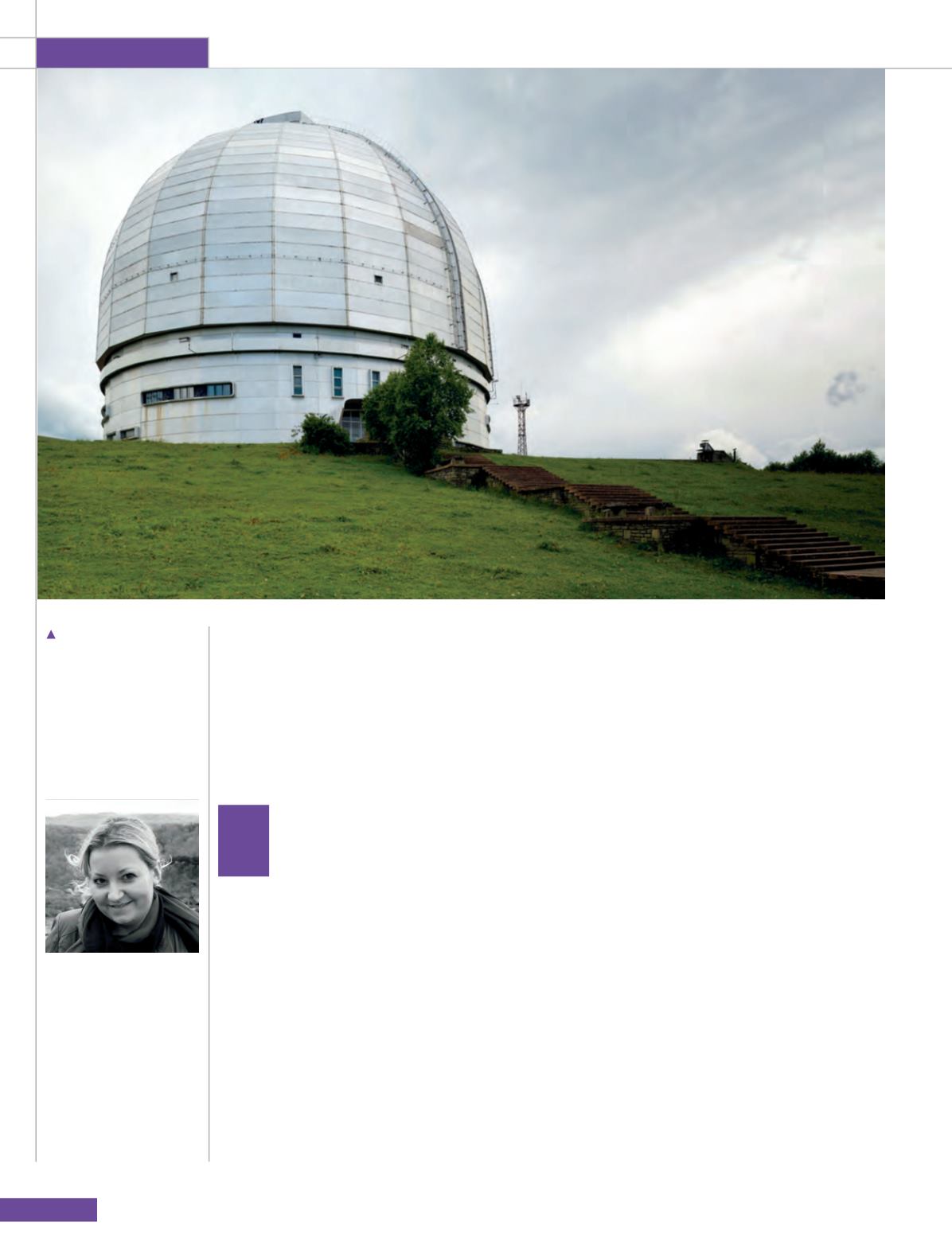
ROOM
102
Space Lounge
Located deep in the mountains of Northern Caucasus between the Black Sea
and the Caspian Sea, the Special Astrophysical Observatory (SAO) of the Russian
Academy of Sciences is a unique scientific research centre, a place where
history meets modern astrophysics. During 2016 the observatory opened its
doors to a number of Russian and Austrian artists, giving them an exclusive
opportunity to use the entire observatory territory for art installations.
Ksenia Adamovitch
Editor
T
he astrophysical observatory was founded
in 1966, six years after an initial move by
the Soviet government to build the largest
fundamental space research observatory
in the country. To this day, it is the largest space
observation centre in Russia.
It is home to the BTA-6 (Large Altazimuth
Telescope), a 6 m aperture optical telescope. From
1975 until 1990, the BTA-6 was the largest telescope
in the world, and was the first to use an altazimuth
mount with a computer-controlled derotator, now
standard in large telescopes. Starting in early 2017,
the observatory is using the BTA-6 to observe classic
luminous blue variable (LBV) stars, spectra and
magnetic fields of massive stars. Only 20 km from
the BTA-6 is the RATAN-600 radio telescope, the
world’s largest-diameter individual radio telescope.
The observatory that houses the BTA-6 is
located on the Pastukhov mountain at a height
of 2100 km and some 17 km from the village of
Nizhny Arkhyz, the residential village built for the
scientists and their families.
Setting the scene
Nizhny Arkhyz, formerly known as Bukovo,
is anything but a typical village. Made up
of two apartment buildings, a school, a
kindergarten, laboratories and a hotel, it
is home to residents who are exclusively
astronomers working at the observatory and
their family members. Many of the nearly 1000
inhabitants of the village are second or even
third generation astronomers - descendants
of those who had worked at the observatory
in the 1970s. The director of the observatory,
Yury Balega, has been with the observatory
since 1975, when he came there shortly after
graduating college.
The main SAO
observatory.
Science meets
history and art
Yuri Palmin


